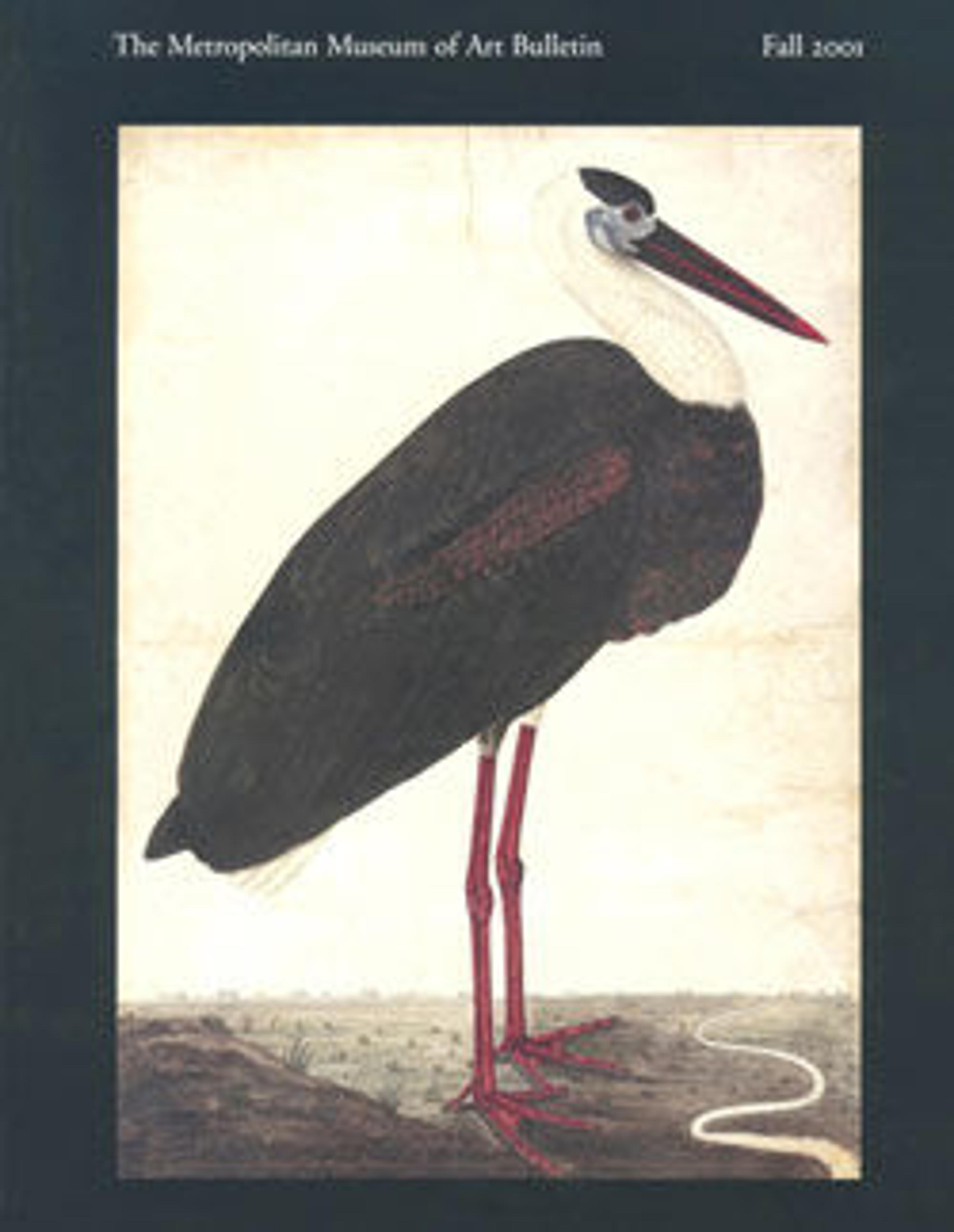Bugaku Dancers
The costumed dances known as bugaku have been customary in Japanese court rituals and festivals since the eighth century, when the Nara court adopted them along with many other aspects of Chinese Tang-dynasty culture. The brilliantly costumed dancers and musicians are disposed here within a large format in a type of composition that was current among seventeenth-century artists of the Kano school.
The scene is anchored on the left by musicians playing a drum, a flute, and a mouth organ on a dais covered by a large brocade awning. Thirty-five dancing figures fill the remaining panels, set randomly on the gold-leaf ground in poses and costumes that represent the classic bugaku repertory. At the upper left, a large signature, accompanied by one of Yasunobu's seals, reads Hōgen Eishin hitsu ("the brush of Hōgen Eishin"). Yasunobu used this honorary title, which he received in 1662, until his death in 1685.
The scene is anchored on the left by musicians playing a drum, a flute, and a mouth organ on a dais covered by a large brocade awning. Thirty-five dancing figures fill the remaining panels, set randomly on the gold-leaf ground in poses and costumes that represent the classic bugaku repertory. At the upper left, a large signature, accompanied by one of Yasunobu's seals, reads Hōgen Eishin hitsu ("the brush of Hōgen Eishin"). Yasunobu used this honorary title, which he received in 1662, until his death in 1685.
Artwork Details
- Title: Bugaku Dancers
- Artist: Kano Yasunobu (Japanese, 1614–1685)
- Period: Edo period (1615–1868)
- Culture: Japan
- Medium: Six-panel screen; ink, color, and gold on gilded paper
- Dimensions: Image: 69 3/8 in. × 12 ft. 2 3/8 in. (176.2 × 371.8 cm)
- Classification: Paintings
- Credit Line: Gift of James L. Greenfield, in memory of Margaret Greenfield, 2000
- Object Number: 2000.453
- Curatorial Department: Asian Art
More Artwork
Research Resources
The Met provides unparalleled resources for research and welcomes an international community of students and scholars. The Met's Open Access API is where creators and researchers can connect to the The Met collection. Open Access data and public domain images are available for unrestricted commercial and noncommercial use without permission or fee.
To request images under copyright and other restrictions, please use this Image Request form.
Feedback
We continue to research and examine historical and cultural context for objects in The Met collection. If you have comments or questions about this object record, please complete and submit this form. The Museum looks forward to receiving your comments.
